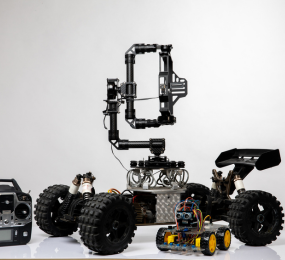Sustainability is not a buzzword anymore; rather, it has now become a necessity in today's rapidly changing world. With so much emphasis on electrifying cars and trucks, non-road mobile machinery is an equally important area of focus. From construction equipment to agricultural machines, electrification of these engines can have profound environmental impacts. The goal of this blog is to explore the environmental advantages of electrically powered non-road mobile machinery by providing useful insights, practical tips and examples.
What is Non-Road Mobile Machinery?
Non-road mobile Machinery (NRMM) is a broad term that refers to a variety of different machines that are not used on public roads. They include construction equipment such as excavators and bulldozers, tractors as well as harvesters among other types of machines used in mining, landscaping and other sectors. Unlike road vehicles, NRMM operates under different regulations and standards, making electrification an exciting yet challenging endeavour.
Why Electrify Non-Road Mobile Machinery?
Several benefits make electrifying NRMM worthwhile. Firstly, it greatly reduces greenhouse gas emissions and air pollution levels. Nitrogen oxides (NOx) as well as particulate matter (PM) are harmful pollutants emitted by diesel engines which are commonly used in NRMMs. By going electric, we get rid of these emissions completely. Secondly, electric machinery operates with less noise, reducing noise pollution effectively.
The Environmental Benefits of Electrification
Improved Air Quality
Air quality improvement is another key benefit. Diesel engines are responsible for large amounts of PM and NOx, which cause health problems. Air pollution causes 4.2 million premature deaths annually according to the World Health Organization (WHO). Electrifying NRMM can help reduce this toll by cutting down on air pollutants.
Energy Efficiency
Electric motors generally have higher energy efficiency compared to diesel motors. In addition, the conversion of electrical energy into mechanical energy by electric motors is estimated to be over 85%. On the other hand, diesel engines’ conversion is about 20-30%. This may lead to low costs due to reduced wastage of energy and minimal environmental effects.
Case Studies in Electrification
Construction Industry
Significant advances have been made in electrifying NRMM within the construction industry. For example, Volvo Construction Equipment has developed electric compact excavators and wheel loaders that are low-emission and quieter. A case study conducted at a construction site in Oslo Norway showed that carbon-di-oxide emissions went down by 95% while noise was cut by half using green machinery.
Agriculture
Electrification is also making progress among major agricultural equipment manufacturers like John Deere. The firm’s electric tractors are environmentally friendly while still providing better management of torque and engine power output. Farmers could realize a decrease in operating expenses by up to 40% when they move their farm activities from conventional tractors to electricity-powered ones.
Frequently Asked Questions (FAQs)
How long do the batteries last?
Battery life depends on the type of machinery and how it’s used. Most electric NRMMs offer operation times ranging between four and eight hours when fully charged. However, major advancements in battery technology are anticipated to increase this period soon after.
Are there any reasons to be concerned about safety?
In general, electric machines are safer than their diesel counterparts. They make less noise and do not emit toxic fumes which protect the health of operators. Safety instructions should, however, be followed at all times, especially when handling batteries and electrical components.
Do we have any plans for the disposal of old diesel engines?
Proper disposal of old diesel engines is important to prevent contamination of the environment. To ensure proper management, a majority of manufacturers have established recycling initiatives for these parts.
Statistics
The Economic Implications of Electrification
Advantages associated with electrifying non-road mobile machinery (NRMMs) include reducing costs by 20-40% compared to diesel-powered equipment due to lower fuel and maintenance expenses. According to estimates by the end of 2025, transitioning towards the use of electric NRMM would create approximately 149,000 new jobs for electrical engineers and technicians which would improve the economy.
Environmental Statistics
By electrifying non-road mobile machinery (NRMM), pollutant emissions could significantly decline, with nitrogen oxide emissions falling up to 50% about 2030 figures and particulate matter emissions dropping by 40%; this may save lives lost prematurely through air pollution reaching around a quarter million victims. Moreover, this transition may result in reducing worldwide energy consumption by as much as 30%, thus saving approximately three million barrels per day by the year 2040.
Conclusion
Electrifying non-road mobile machines is a great opportunity for rapidly decreasing greenhouse gas emissions, improving air quality, and increasing energy efficiency. There are challenges but technology advancements along with government support can make it possible for this development path. Through this, industries can be part of a sustainable tomorrow while enjoying lower operational costs and improved machine performance.










